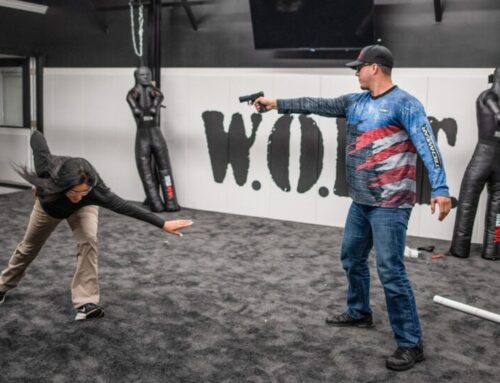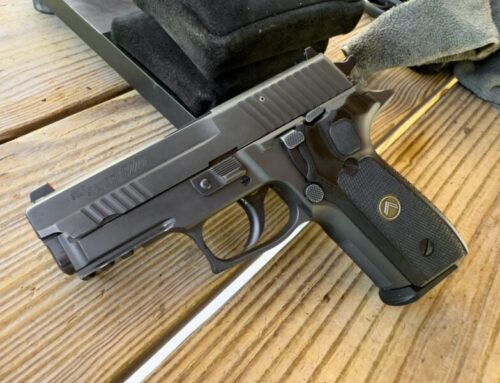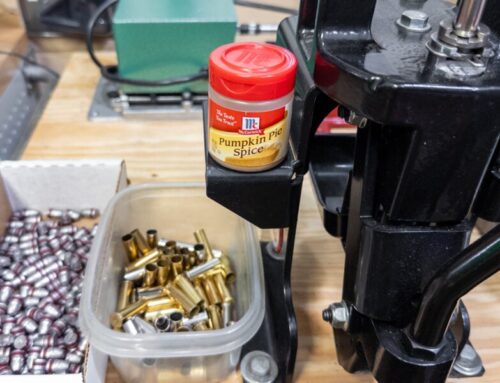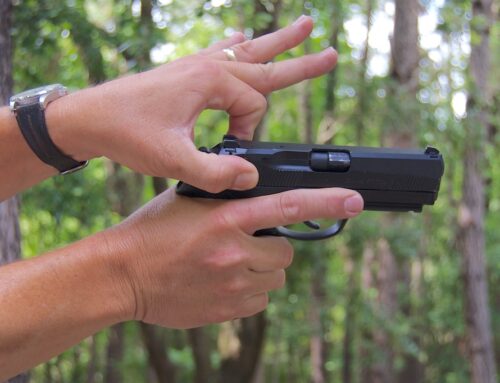
What do you really need to reload your own ammunition? Read on to find out…
There is such a fine line between needs and wants. It’s oh so easy to consider something that’s really a “want” as a “need.” You know, like bacon is technically a “want.” Hang on, upon further reflection that is, in fact, a need. But you get the idea.
The first question prospective reloaders always ask me is, “How much will it cost me to get started?” The problem with that question is that it depends. It depends on whether you want to reload for rifle, pistol, or both. It depends on the number of calibers you want to reload. But more than anything, it depends on your personal definitions of needs and wants.
The list of stuff you truly need is actually pretty modest. When I say need, let’s consider the extreme and rule out gear that simply makes the job easier or faster. Those things are “wants” and you can always add that stuff later. Here, I’ll use this criterion to define gear you need: If you can’t SAFELY reload a cartridge without it, then it’s a need.
So here’s the list of gear you need to safely reload pistol ammunition. At the end, I’ll mention what you need to add if you want to reload bottleneck rifle cartridges. We’ll address the benefits of those pieces of “want” gear in a later article in this series.
Cartridge Case Cleaner
When you pick up fired brass cartridge cases, they’ll be dirty. Depending on whether you shoot at an indoor or outdoor range, the relative level of “dirt” will vary. At a minimum, you’ll want to remove any loose powder residue and whatever dirt your brass acquired when it hit the floor. While your brass does not have to be shiny like new, it does need to have the loose dirt removed. That’s because the brass needs to work smoothly with your reloading dies, and when finished, it needs to reliably load into your gun. If brass is covered with sand and Twinkies filling, you’re going to mess up your dies and run into reliability problems later.
If you want to stick to basic needs, you can clean your brass with stuff you already have. Hot water, a plastic container and some Tide (or a mixture of dish detergent, vinegar, and salt) will get the job done. Throw the dirty brass in there, shake the snot out of it, rinse, and dump on a towel for a day or so to dry. It won’t look pretty, but you’ll achieve the goal of removing loose dirt.

Sooner or later, you’ll want a tumbler or ultrasonic cleaner, but you don’t need either right away.
Your brass won’t be all pretty and shiny, but it will be clean enough to reload. To me, this is a hassle that’s not worth saving sixty to eighty dollars on a brass cleaner. These come in various types including ultrasonic cleaners, dry tumblers, and wet tumblers. Since a cleaning machine is a “want” we’ll get into those in much more detail later in the series.
Cost: $0 dollars. Since we’re being hardcore about wants and needs, we’ll assume you can start with a bucket or other container and acquire a fancy case cleaner down the road.
Reloading Press
This component is a need, although you can get started with a very simple and inexpensive single-stage (or even hand operated) reloading press.
Think of a reloading press like one of those old Play-Doh factories. You know, the ones where you dump Play-Doh in a hopper and press a big lever, so it comes out like star-shaped spaghetti. Like the Play-Doh factory, a reloading press is just a device that uses mechanical advantage to squish things together.

A well-used Lyman single-stage reloading press.
You can do these things with a reloading press:
- Press a brass case against a decapping pin to push out the old primer.
- Press a casing into a resizing die that jams the brass back into its original dimensions.
- Press a new primer into the now empty primer pocket.
- Press the casing against an expanding die that opens the mouth just a tad so you can insert a new bullet.
- Press the bullet down into the casing.
- Crimp the casing around the bullet to remove the bell from the expansion step.
What type of reloading press do you need to get started? I always recommend starting with a single stage press. Single stage means the press does one thing at a time. Using a single stage press, you’ll load in batches. For example, you’ll resize all your cases, then prime them all, then add powder, then seat the bullet and finally crimp all of the cases. While it’s more tedious, a single stage press is simple to learn, forgiving, and most important for this discussion, inexpensive.
Cost: $150. These range higher and lower in price, but you can buy a good that will last you 115% of forever for this price.







Leave A Comment